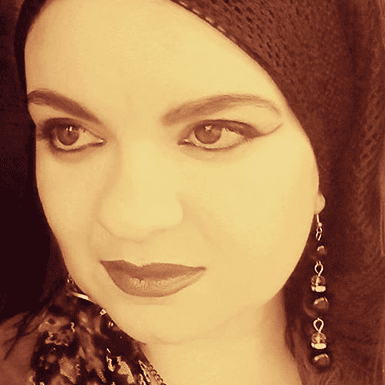The introduction to Nabil Anani: Palestine, Land and People (Saqi Books, 2018) sets the pace for delving into the art collection in this book which weaves an intricate trail of memory, where its participants and inhabitants beckon for our sensibilities first and foremost to see the laceration of land and people as a perpetual wound. “In his paintings,” writes Mourid Barghouti, “Anani is a novelist because he tells the story of a group of people too brutalised to tell their own story.” Yet this is just one of the roles assumed by the artist and perhaps the most valuable, given the power of imagery to convey any emotion or event which moves beyond the realm of words.
A leading figure in Palestinian art, Anani’s evolution as an artist is intertwined with his experiences. From the Nakba, which he experienced as a child, to the changing of Palestine’s landscape throughout the years, marked by the 1967 military occupation and subsequent colonial expansion, Anani’s work brings together two distinct experiences: nostalgia for Palestine before Zionist colonisation, and the actual experience of living in a transformed, oppressed territory.
READ: Israel deports Italian artists for drawing Ahed Tamimi mural
In her contribution to the book, Tina Sherwell writes: “The desire to return to a Palestine of olden times can also be understood as the desire to create a future Palestine in the image of the past.” It is an astute observation, one that acknowledges how Palestinians were stripped of their history by colonial violence, and how another past was forced upon them. Palestinian memory of historic Palestine and the Nakba require space, but space has been deprived through elimination. In some ways, Anani’s artwork seeks the freedom of expression to articulate individual and collective history, yet there is also awareness that the artistic expression is a derivative of the absence of space as well. Hence, the landscapes, portraits and abstract impressions embody the contradiction. It is, in itself, a promise that can be understood and felt by observers, whose knowledge of Palestine is distanced from experience.
Bashir Makhoul’s invaluable essay, penned under one of the most beautiful titles I have encountered — “The inability to forget and the promise of memory” — gives an in-depth understanding of memory frameworks and emotion juxtaposed against time. Makhoul argues that art and nostalgia are vehicles for mobilisation and nostalgia being “a reaction against the theft of the past by an occupying force.” Anani’s art adds to the significance of Palestinian collective memory and recognises what Makhoul describes as “a complex relation between innovative repetition and the past.” For Palestinians, history and the present constitute an open wound. Thus, the present is imbued with its past desires, none of which can be completely relegated to the past due to their relevance in the present. The return, therefore, is desired and heavily ingrained in both past and present; it is, quite possibly, the most visible part of Palestinian history.
In Anani’s artwork, it is possible to discern how the utopian image of Palestine strikes a contrast with the bleaker depictions that are a remembrance of Israel’s colonial violence. Landscapes feature prominently, showing the Palestinians’ attachment to the land as they remember it, or as it was narrated to them by previous generations. As Sherwell writes, the landscapes are “free from humiliation.” On their own, the landscapes indeed portray a sense of freedom. However, the inclusion of figures in his landscape art act as a premonition if one recalls Palestinian history as a result of the Nakba, as well as the ongoing colonisation and destruction of villages and agricultural land by the colonial state of Israel.
READ: Global artists boycott Eurovision in solidarity with Palestinians
Anani’s portraits, however, convey a different story. In “Mothers Waiting” there is a sense of foreboding, despite the warm colours that are prominent in the acrylic. His portraits of Palestinian families from photos prior to the Nakba are an unfinished story, not so much due to the realisation that the collective is made up of smaller components and individuals, but out of recognition that we know the history without the names. Anani transfers the impact of an incomplete knowledge to his audience, so that we all desire to know more. That is a separation for us, as viewers who do not know the people involved or their narratives. Much of the history that makes its way through us is generalised, although by no means derisive of the Palestinian struggle and loss. However, the portraits force us into a new consciousness; it is all of these individuals and their hidden stories that we should be searching for.
Anani’s later abstract creations, in which the use of canvas and acrylic is dismissed to create art with available Palestinian materials, invoke the contradiction woven through freedom, desire and oppression. The use of such material is part of the artist’s journey in “shaking off the medium,” as Lara Khaldi explains. Created during the first intifada, Palestinian artists, including Anani, veered towards abstract work and focused on sustaining both the reality and the metaphor of Palestinian collective memory. Khaldi describes the decision to change mediums as an act of rebellion which led to the questioning of the artists’ role in depicting Palestinian memory.
Nostalgia is heavily present in all of Anani’s work. He embodies the truth; a rupture remains present. “Evacuation” portrays such a reality intensely; Palestinians emerging from their village while two others, a woman and a child, witness the abandonment. There is an onlooker, however, in every individual. In Anani’s art, the tragedy of Palestinians is each onlooker incarcerated on canvas; a free creation that cannot obtain freedom from Israel’s colonial presence.









